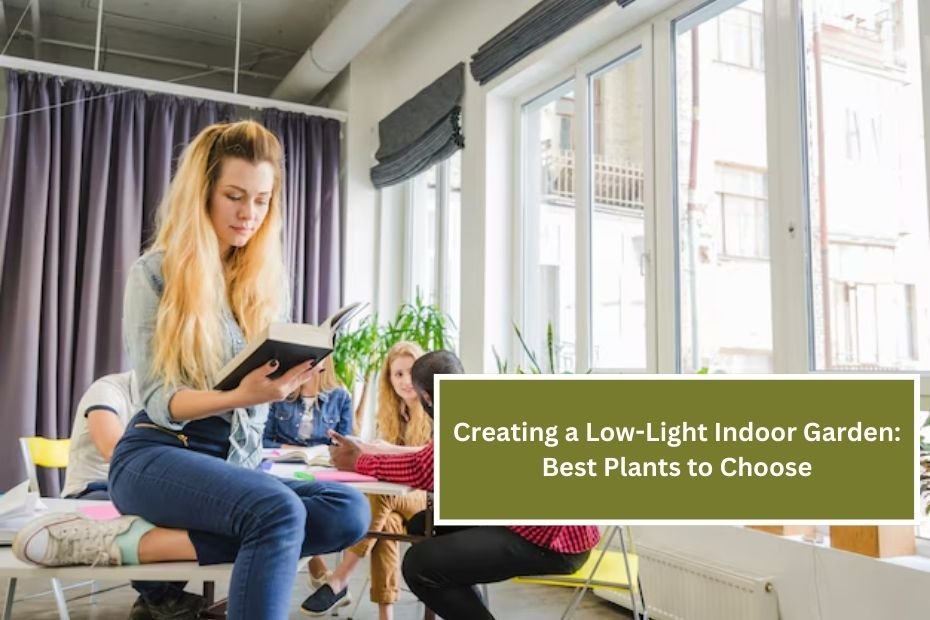Gardening is not just an outdoor hobby; it can also be a rewarding indoor activity. Many people live in homes or apartments with limited sunlight, which can make it challenging to keep plants alive. However, with the right knowledge, you can create a beautiful low-light indoor garden filled with vibrant plants that thrive in less-than-perfect lighting conditions. In this article, we’ll explore the best plants for low-light environments, tips for caring for them, and how to create a stunning indoor garden.
Understanding Low-Light Conditions
Before we dive into specific plants, it’s essential to understand what low light means. Low-light areas are spaces where direct sunlight does not reach, such as rooms with small windows or those that face north. These areas receive indirect light or very little light throughout the day. While most plants thrive in bright, direct sunlight, several varieties can adapt to low-light conditions and still flourish.
Benefits of Indoor Gardening
Indoor gardening has many benefits, including:
- Improved Air Quality: Plants help purify the air by absorbing toxins and releasing oxygen.
- Aesthetic Appeal: Indoor plants can enhance the beauty of your space, making it more inviting and calming.
- Stress Relief: Gardening can reduce stress and promote relaxation.
- Connection with Nature: Having plants indoors can create a sense of connection to nature, even in urban settings.
Now, let’s explore some of the best plants to choose for your low-light indoor garden.
Best Plants for Low-Light Conditions
1. Snake Plant (Sansevieria)
The snake plant is one of the most popular houseplants for low-light environments. Its upright, sword-like leaves can vary in color, from dark green to variegated yellow. Snake plants are incredibly hardy and can tolerate neglect, making them ideal for beginners.
Care Tips:
- Water sparingly; let the soil dry out between waterings.
- Place it in indirect light, but it can also tolerate fluorescent lights.
2. Pothos (Epipremnum aureum)
Pothos, also known as devil’s ivy, is an excellent choice for low-light areas. Its heart-shaped leaves come in various shades of green and yellow. Pothos plants are very forgiving and can thrive in a range of conditions.
Care Tips:
- Water when the top inch of soil feels dry.
- They grow well in low light but can become leggy if not pruned regularly.
3. ZZ Plant (Zamioculcas zamiifolia)
The ZZ plant is known for its glossy, dark green leaves that add a touch of elegance to any space. It is one of the toughest houseplants and can survive in low light and with little water.
Care Tips:
- Water only when the soil is completely dry.
- Avoid overwatering, as this can lead to root rot.
4. Spider Plant (Chlorophytum comosum)
Spider plants are popular for their ability to thrive in various conditions, including low light. Their arching green and white striped leaves create a beautiful display. They also produce “pups” or baby plants that can be propagated easily.
Care Tips:
- Water when the soil feels dry, but do not let it sit in water.
- Spider plants can benefit from occasional misting to increase humidity.
5. Peace Lily (Spathiphyllum)
Peace lilies are known for their elegant white blooms and lush green foliage. They can thrive in low-light environments and are also great for improving air quality.
Care Tips:
- Keep the soil moist but not soggy.
- Peace lilies will droop when they need water, making them easy to care for.
6. Cast Iron Plant (Aspidistra elatior)
True to its name, the cast iron plant is incredibly resilient and can survive in nearly any environment. Its dark green leaves can tolerate low light and neglect.
Care Tips:
- Water when the top inch of soil is dry.
- It can survive in low humidity and poor soil conditions.
7. Chinese Evergreen (Aglaonema)
Chinese evergreens are beautiful plants with variegated leaves that come in various colors, including green, silver, and red. They thrive in low light and are very easy to care for.
Care Tips:
- Water when the top inch of soil is dry.
- They prefer humid environments, so occasional misting is beneficial.
8. Dracaena
Dracaena comes in various species and sizes, with long, slender leaves that can add height to your indoor garden. These plants can tolerate low light but prefer bright, indirect light.
Care Tips:
- Allow the top inch of soil to dry out between waterings.
- Rotate the plant occasionally to ensure even growth.
9. Bamboo Palm (Chamaedorea seifrizii)
Bamboo palms are beautiful indoor plants that can grow well in low light. Their slender canes and feathery fronds bring a tropical feel to any room.
Care Tips:
- Water regularly, keeping the soil slightly moist.
- They thrive in humid environments, so misting is helpful.
10. Parlor Palm (Chamaedorea elegans)
Parlor palms are small, elegant plants that can grow well in low light. They have feathery, arching fronds that can add a touch of greenery to any indoor space.
Care Tips:
- Water when the top inch of soil is dry.
- Keep it away from direct sunlight to prevent leaf burn.
Tips for Creating Your Low-Light Indoor Garden
Creating a low-light indoor garden is not just about choosing the right plants; it’s also about how you arrange and care for them. Here are some tips to help you create a thriving indoor garden:
1. Choose the Right Location
Identify areas in your home that receive minimal sunlight, such as north-facing windows or rooms with limited natural light. Ensure that the space is free from drafts and extreme temperature fluctuations.
2. Use Proper Containers
Select pots that have drainage holes to prevent overwatering. Consider using decorative pots to enhance the visual appeal of your indoor garden.
3. Group Plants Together
Grouping plants can create a microenvironment that helps maintain humidity. It also makes your indoor garden look lush and inviting.
4. Rotate Your Plants
To ensure even growth, rotate your plants every few weeks. This practice helps prevent them from leaning toward the light source.
5. Monitor Humidity Levels
Low-light conditions often come with low humidity. Use a humidity meter to monitor levels, and consider using a humidifier or placing a tray of water with pebbles near your plants to increase humidity.
6. Be Mindful of Watering
Overwatering is a common mistake that can lead to root rot. Always check the soil moisture before watering, and make sure the pots have good drainage.
7. Fertilize Sparingly
Indoor plants don’t need as much fertilizer as outdoor plants. Use a diluted, balanced fertilizer during the growing season (spring and summer) and reduce feeding in fall and winter.
Conclusion
Creating a low-light indoor garden is an excellent way to bring nature into your home, even in spaces with limited sunlight. By choosing the right plants, understanding their care requirements, and arranging them thoughtfully, you can create a lush and vibrant indoor oasis. Plants like snake plants, pothos, and peace lilies not only thrive in low light but also enhance your living space’s beauty and air quality. Remember to monitor your plants’ needs and enjoy the process of nurturing your indoor garden. With time and care, you’ll develop a flourishing indoor garden that brings joy and tranquility to your home.

